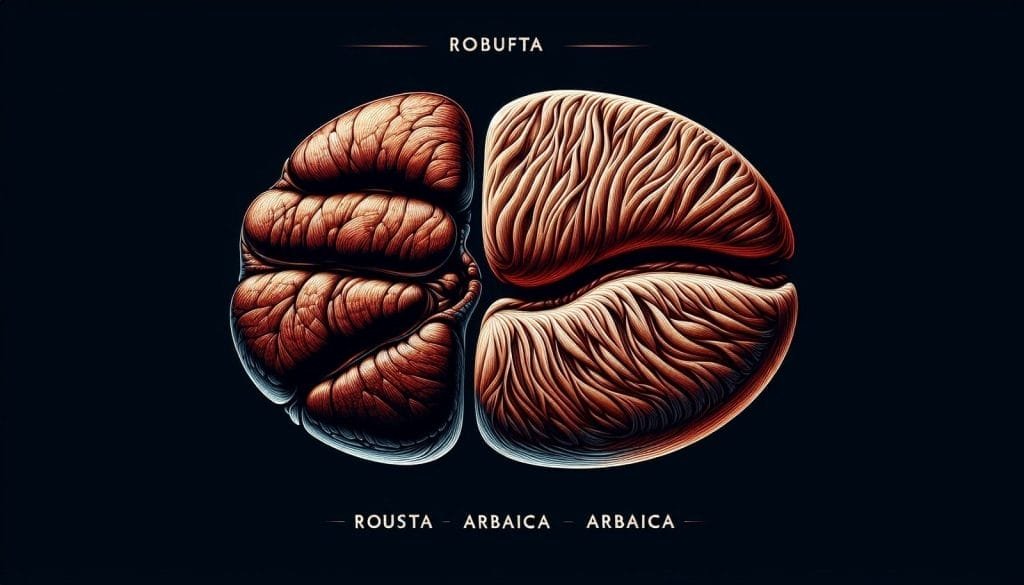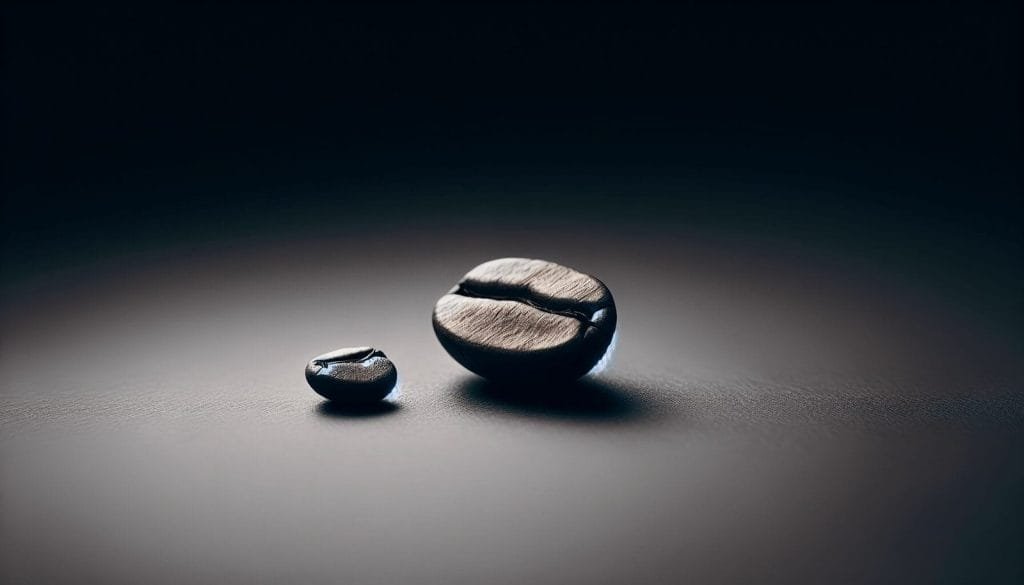Imagine waking up to the aroma of freshly brewed coffee, tantalizing your senses and promising a perfect start to your day. As you take that first sip, your taste buds dance with delight, but have you ever wondered what type of coffee bean is hiding behind that rich, complex flavor? In this article, we will unlock the mystery behind the two most popular coffee variations: Robusta and Arabica. Get ready to explore the subtle nuances, discover their unique qualities, and unravel the secrets hidden within your morning cup of joe.
Understanding the Two Main Coffee Species
When it comes to coffee, there are two main species that dominate the market – Robusta and Arabica. Understanding the characteristics of each species can help you determine the type of coffee you are consuming. Both Robusta and Arabica beans have distinct differences in terms of physical appearance, taste profile, labeling and packaging, country of origin, bean size and shape, caffeine content, growing conditions, and processing methods. By examining these factors, you can gain a deeper understanding of the coffee you are enjoying.
Physical Appearance Differences
One of the easiest ways to distinguish between Robusta and Arabica coffee beans is by their physical appearance. Robusta beans tend to have a more rounded and uniform shape compared to the slightly elongated shape of Arabica beans. Additionally, Robusta beans are often smaller in size and have a harder, thicker skin compared to the softer and thinner skin of Arabica beans.

Taste Profile Variations
The taste profile of coffee can vary greatly between Robusta and Arabica beans. Arabica coffee is renowned for its smoother and more delicate flavors. It often presents a wide range of flavor notes, including fruity, floral, and even chocolatey undertones. On the other hand, Robusta coffee tends to have a stronger and more robust taste, with a higher acidity level. It is often described as having a more bitter and earthy flavor profile.
Labeling and Packaging
Another factor that can help you determine the type of coffee you are consuming is the labeling and packaging. Many coffee brands clearly indicate whether the coffee is made from Robusta or Arabica beans on their packaging. Look for descriptors such as “100% Arabica” or “Robusta blend” on the packaging. Additionally, some brands may provide more specific information about the origin of the beans, allowing you to understand the type of coffee you are purchasing.

Country of Origin
The country of origin can also give you a clue about the type of coffee you are drinking. Arabica beans are typically grown in higher-altitude regions with cooler climates, such as Colombia, Ethiopia, and Brazil. These regions provide the ideal growing conditions for Arabica coffee, resulting in beans with a more nuanced flavor profile. Robusta beans, on the other hand, are often found in lower-altitude regions with warmer climates, such as Vietnam, Brazil, and Indonesia. These areas are known for producing coffee with a bolder and more robust taste.
Coffee Bean Size and Shape
As mentioned earlier, coffee bean size and shape can vary between Robusta and Arabica beans. Arabica beans are typically larger and slightly more elongated, while Robusta beans tend to be smaller and rounder. This distinction in size and shape can be observed even before the beans are roasted. By examining the physical characteristics of the coffee beans, you can gain insights into the species of coffee you are consuming.
Caffeine Content
One of the significant differences between Robusta and Arabica coffee is their caffeine content. Robusta coffee contains almost double the amount of caffeine compared to Arabica coffee. This higher caffeine content contributes to the stronger and more robust flavor of Robusta coffee. If you find that your coffee gives you a more powerful kick and keeps you alert, it is likely that your coffee is made from Robusta beans. On the other hand, Arabica coffee has a lower caffeine content, making it a popular choice for those who prefer a milder and more balanced coffee experience.
Growing Conditions
The growing conditions of coffee plants can greatly influence the characteristics of the coffee beans they produce. Arabica coffee plants thrive in higher-altitude regions with cooler temperatures and ample shade. These plants require a longer growing season, resulting in a more refined and complex flavor profile. In contrast, Robusta coffee plants can tolerate lower altitudes and warmer temperatures. They are hardier and more resistant to pests and diseases. These differences in growing conditions directly impact the flavor and quality of the coffee beans.
Processing Methods
The methods used to process coffee beans can also reveal the type of coffee you are enjoying. Arabica beans are typically washed, which involves removing the outer skin and fermenting the beans before drying them. This process helps to highlight the nuanced flavors present in Arabica coffee. On the other hand, Robusta beans are often processed using the dry or natural method, where the beans are left to dry with the cherries intact. This simpler processing method can contribute to the stronger and more intense flavor of Robusta coffee.
Purchasing from a Reputable Source
To ensure that you are aware of the type of coffee you are consuming, it is essential to purchase your coffee from a reputable source. Coffee brands and roasters that prioritize transparency will often provide detailed information about the origin and species of their coffee. Look for brands that work directly with farmers and have a commitment to sustainable and ethical practices. By purchasing from a trusted source, you can have confidence in the quality and authenticity of the coffee you are enjoying.
In conclusion, determining whether your coffee is made from Robusta or Arabica beans requires an understanding of various factors. By considering the physical appearance, taste profile, labeling and packaging, country of origin, bean size and shape, caffeine content, growing conditions, processing methods, and purchasing from a reputable source, you can decipher the type of coffee you are consuming. Embrace the journey of exploring different coffee varieties and let your taste buds guide you to the perfect cup of coffee.




